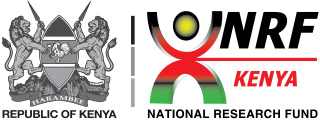Publication: A Comparative Study of the Physiochemical and Bacteriological Parameters of Potable Water from Different Sources in Kitui County, Kenya
| dc.contributor.author | T, Wambua | |
| dc.contributor.author | W, Hunja Carol | |
| dc.contributor.author | Josphert, Kimatu | |
| dc.contributor.author | M, Muluvi Geoffrey | |
| dc.contributor.author | U, Kitheka Johnson | |
| dc.contributor.author | Festus, Mutiso | |
| dc.contributor.author | L, Githenya | |
| dc.contributor.author | K, Ndufa James | |
| dc.contributor.author | Kennedy, Mutati | |
| dc.date.accessioned | 2024-01-09T12:17:55Z | |
| dc.date.available | 2024-01-09T12:17:55Z | |
| dc.date.issued | 2022-11-30 | |
| dc.description.abstract | Developing nations are experiencing an ever-increasing demand for safe water due to climate change and the ever-increasing human population. Various strategies including construction of shallow wells, boreholes and sand dams along the river are done to make water available to various households. However, availability of water sources near are faced with challenges of pollution from a variety of sources. The aim of this study was to determine the levels of selected bacteriological and physico-chemical parameters in three potable water sources namely Kiembeni borehole, Mwitasyano River and Kalundu Dam in Kitui County. The quality of this water was compared to the standards for potable water prescribed by Kenya Bureau of Standards (KEBS). Representative sampling was conducted during the wet season (October 2019) and the dry season (August 2020) in the three sampling sites. The samples were analyzed for physico-chemical parameters: pH, color, turbidity, alkalinity, conductivity, iron, calcium, magnesium, hardness, chloride, fluoride, sulphates, ammonia, total dissolved solids and bacteriological parameters: total and fecal coliform. The analysis was performed at the Kenya Water Institute (KEWI) laboratory using standard procedures. The values obtained for the different water sources in the wet season and dry season were pooled and mean values calculated to determine the overall quality of drinking water. The results indicated that all the water sources had fecal coliform levels unsuitable for drinking water. Most of the values obtained for pH, color, alkalinity, conductivity, calcium, fluoride and sulphates in all sources of water were within the recommended potable water standards by KEBS. However, turbidity, iron and total coliform obtained values for borehole water samples were not within the recommended KEBS standards. The river and dam water samples were within the recommended standards for magnesium, hardness, chloride, ammonia and total dissolved solids. Although results indicate that some of the physico-chemical parameters were in conformance with the recommended standards, the overall bacteriological parameters render the water unsuitable for drinking. Thus, public health intervention programmes should be focused on addressing various sources of water pollution including regular disinfection of water. | |
| dc.description.sponsorship | National Research fund (NRF), South Eastern Kenya University | |
| dc.identifier.uri | https://doi.org/10.7176/JEES/12-11-05 | |
| dc.identifier.uri | https://repository.nrf.go.ke/handle/123456789/85 | |
| dc.language.iso | en | |
| dc.publisher | Journal of Environment and Earth Science | |
| dc.subject | South Eastern Kenya University | |
| dc.title | A Comparative Study of the Physiochemical and Bacteriological Parameters of Potable Water from Different Sources in Kitui County, Kenya | |
| dc.type | Article | |
| dspace.entity.type | Publication |
Files
License bundle
1 - 1 of 1
No Thumbnail Available
- Name:
- license.txt
- Size:
- 1.62 KB
- Format:
- Item-specific license agreed to upon submission
- Description:
